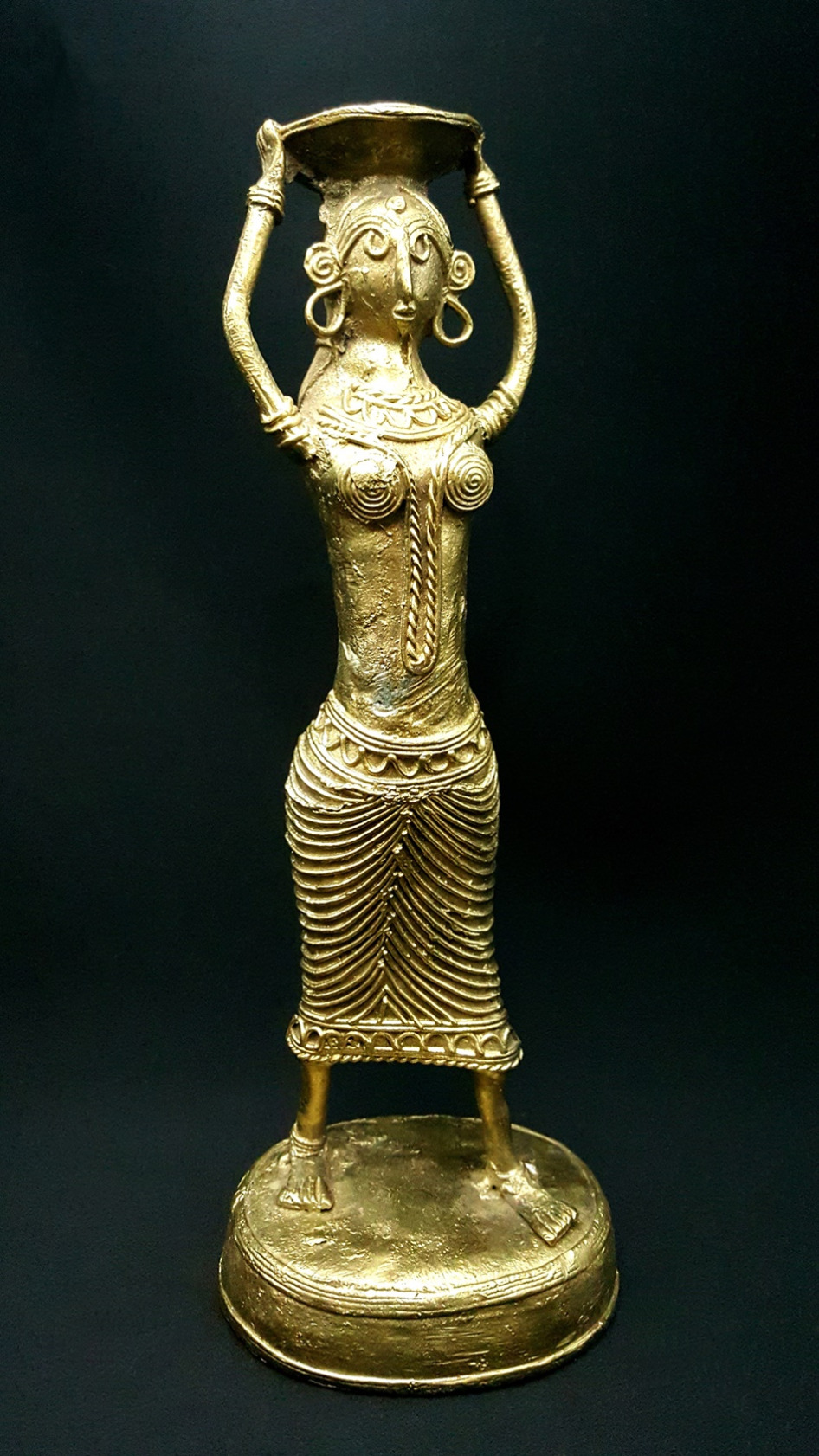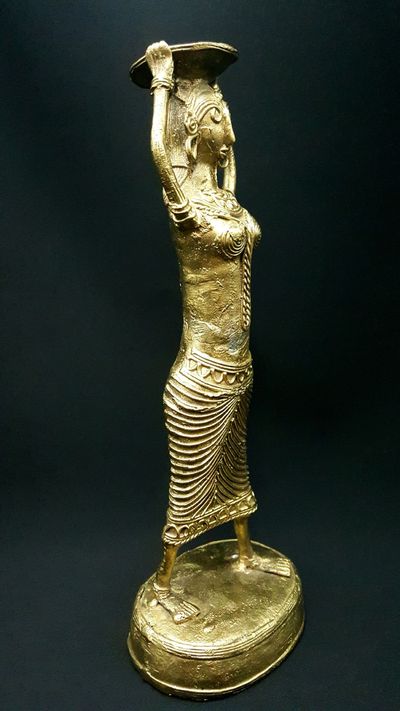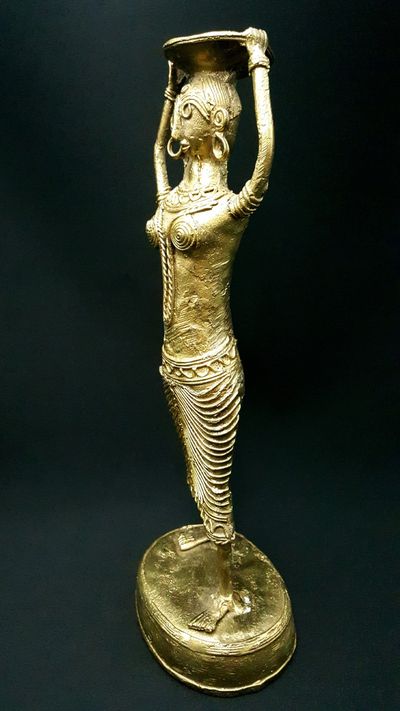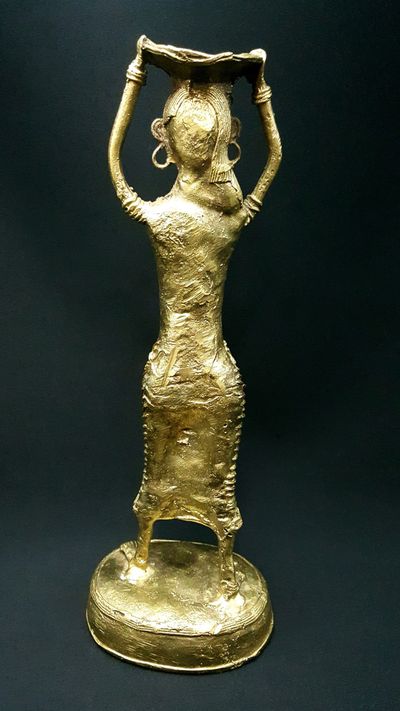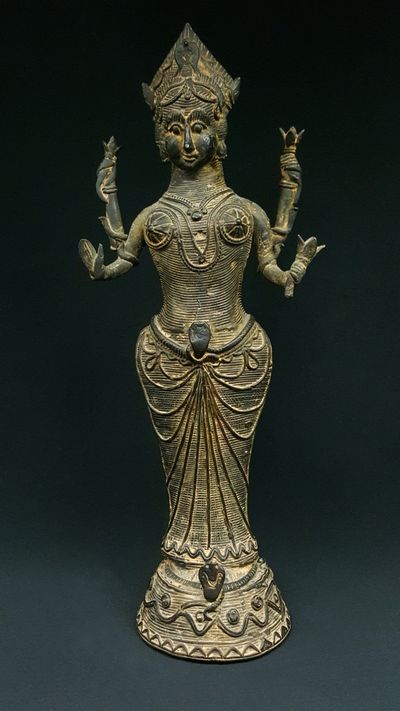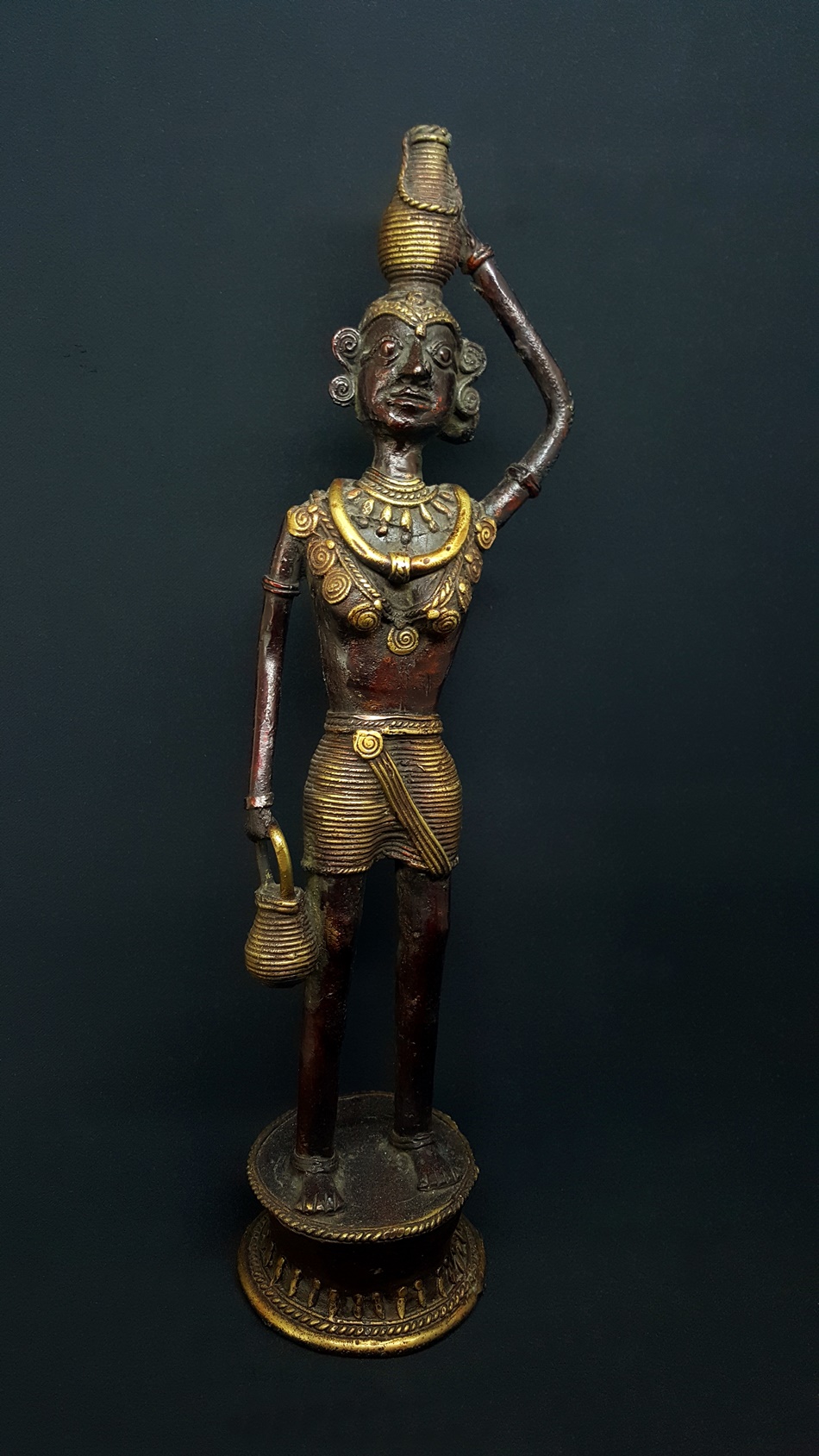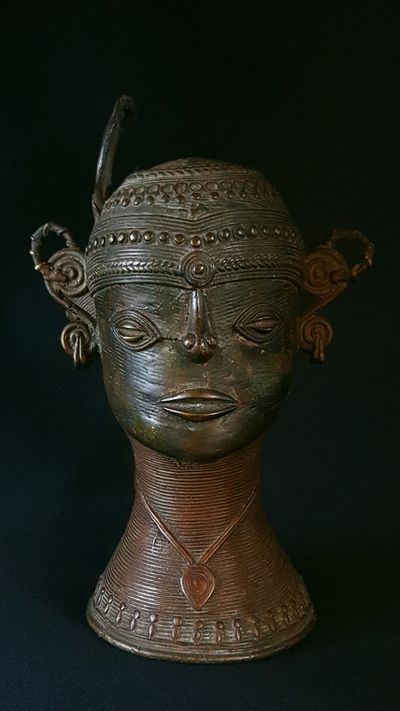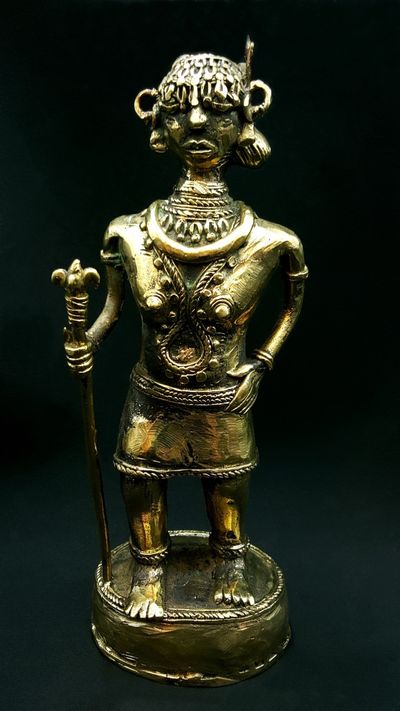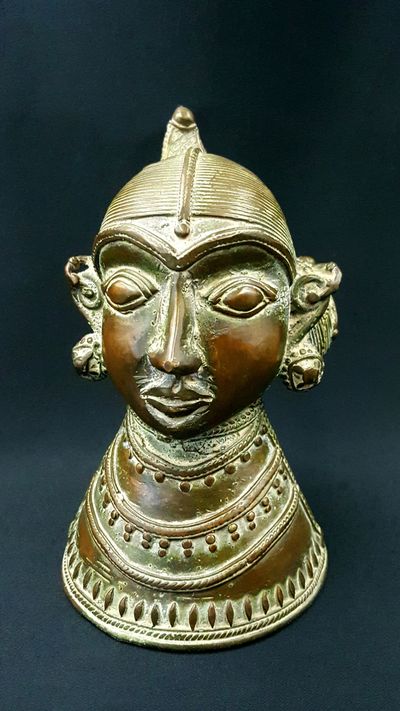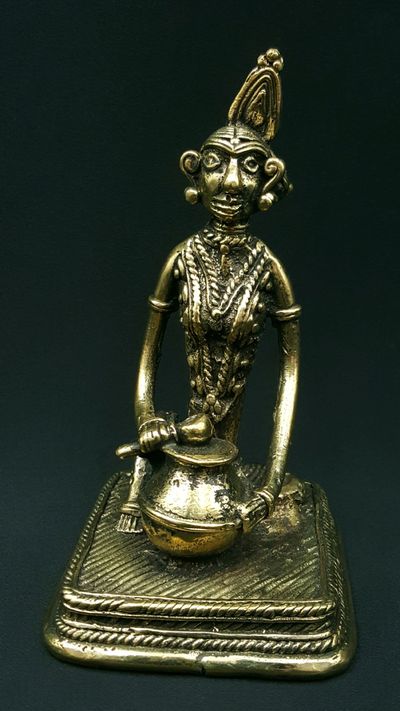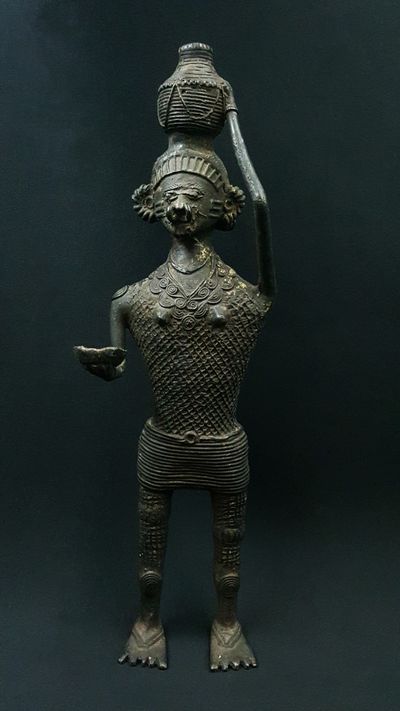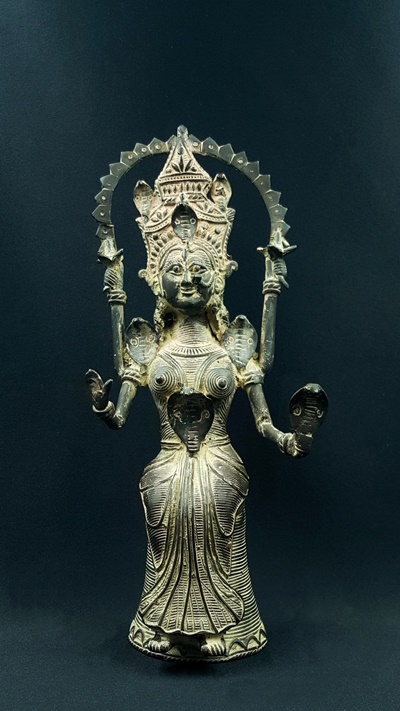Statue : Femme au plateau
La grâce au quotidien
€95.00
Statue tribale de l’Ouest Bengale en Inde représentant une femme dans une scène de vie quotidienne : simplicité de la réalisation de l’artiste et élégance. En savoir plus...
Hauteur : 25,5 cm
Poids : 0,540 Kg
Art tribal
Technique de la cire perdue - Alliage cuivreux
Origine : Ouest Bengale - Inde
Livraison gratuite UE, Norvège et Suisse
Description
L'art tribal
Les tribus, pratiquant l'art Dokra, sont originaires de la région de Bastar, dans l'Inde du Sud (aujourd'hui situé dans l'État de Chattisgarh), elles ont émigré plusieurs siècles auparavant et se sont installées un peu partout en Inde du Nord au Sud.
La plupart ont gardé leur tradition (art culinaire, vestimentaire, fêtes-) et leur religion animiste.
L'art Dokra
Cet art tribal indien artisanal n'a pas changé depuis des millénaires (+ de 4000 ans) et la technique utilisée est toujours celle de la cire perdue : un modèle grossier en argile est réalisé puis recouvert de cire par l'artiste qui va lui donner sa forme définitive avec ses détails. L'ensemble est à nouveau recouvert d'un mélange argileux puis chauffé dans un foyer ouvert où un alliage cuivreux sera coulé. voir Blog.
Les objets produits par les artistes Dokra peuvent être de nature usuels : coupelle, bougeoir... des instruments de musiques (cuivres), ou bien artistiques tels que des bijoux, des animaux : chevaux, éléphants, tortues..., des statues d'hommes et femmes représentant des scènes de vies quotidiennes et des divinités hindous adoptées par les tribus : Ganesh, Lakshmi...
Posture Debout avec une démarche légère, cette femme s'apprête à aller chercher de la nourriture qu'elle portera sur le plateau posée sur sa tête. Le dos est droit : cette femme dégage une impression de dignité malgré la difficulté de la tache.
Bijoux
Plusieurs colliers qui se succèdent ainsi qu’un très long collier qui descend jusqu’à sa taille qui renforce l’impression de l’élégance.
Deux boucles d’oreille donnent du volume au visage.
Dans cette statue, le modelage à l'aide de fils de cire apparaît clairement.
